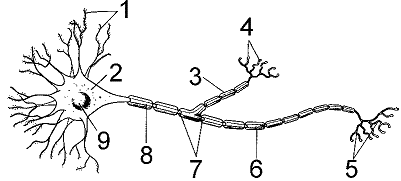According to bottom-up and top-down control models of community organization, which of the following expressions would imply that an increase in the size of a carnivore (C) population would negatively impact its prey (P) population, but not vice versa?
A) P ? C
B) P ? C
C) C ? P
D) P ? C ? P
E) C ? P ?
Answer: A
You might also like to view...
As a general rule, the small intestine of a pig or human is
a. about 60 cm long. b. about 1.5 m long. c. about as long as the individual is tall (or long in the case of the pig). d. about five times the height of the individual.
The structure in Figure 41-1 that is specialized to receive stimuli and send signals to the cell body islabeled:a
1.
b. 4.
c. 5.
d. 6.
e. 7.
Which of the following is mismatched?
A. Salk vaccine; requires boosters B. Sabin vaccine; live attenuated vaccine C. Salk vaccine; administered orally D. Sabin vaccine; less stable E. Salk vaccine; inactivated polio vaccine
What is the difference between a gene and an allele?
A gene is a form of a trait, and alleles make up genes. A gene is a sequence of bases in a DNA molecule, and an allele is an alternative version of a gene that codes for a different, but related, feature. A gene is a sequence of bases in a DNA molecule, and an allele is an alternative version of a gene that codes for the same feature. A gene describes a chromosome, and an allele describes an exact location of a gene on a chromosome. An allele and a gene are the same thing.